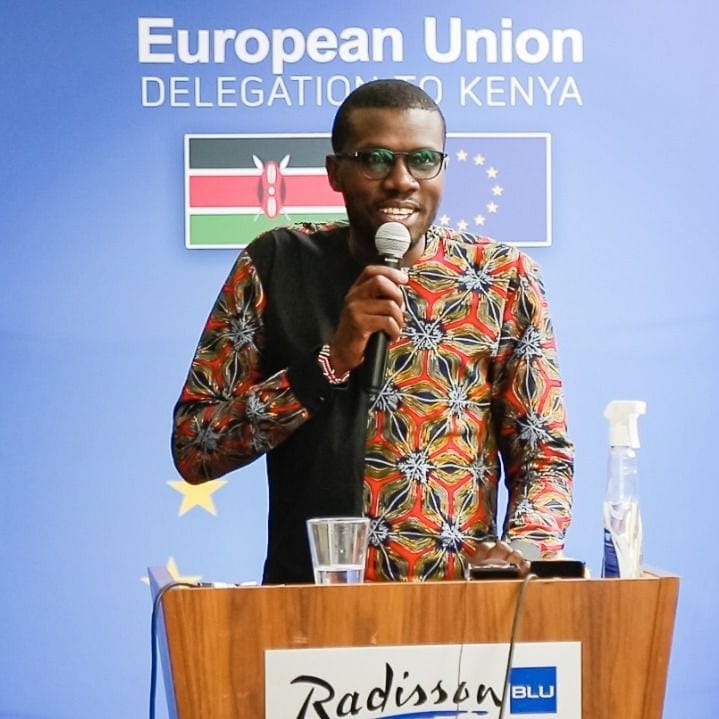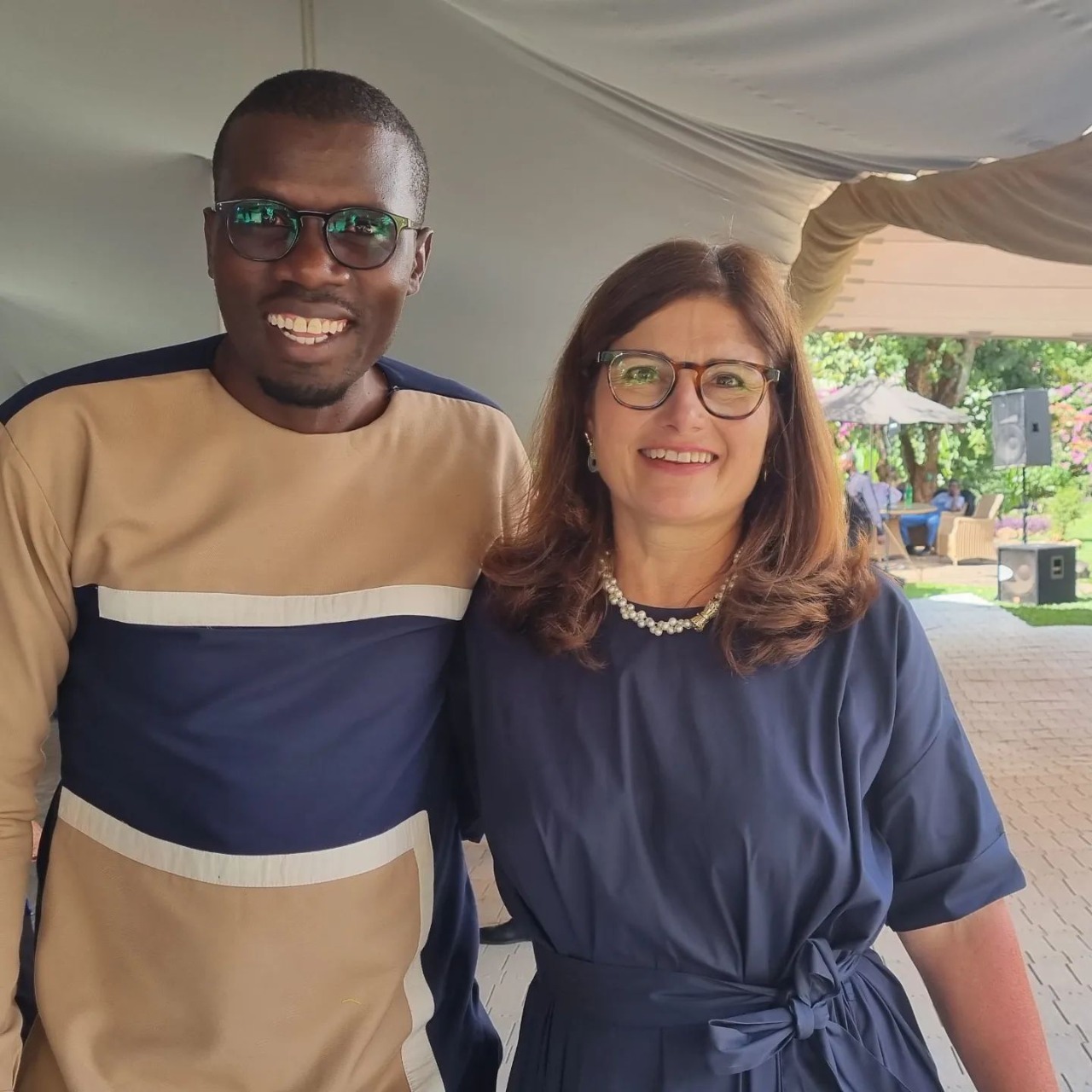
[Story Telling for SDG Implementation] Duncan Chando (MDP 2016)
- Date 2022-07-08 15:35
- CategoryStory
- Hit1475
NB: This interview is part of the series, ‘Story Telling for SDG Implementation: Case Studies from Around the World.’ It is a KDIS Alumni Working Partner Program initiative run by Ms. Cynthia Mbabazi (MPP 2019) and Mr. Socrates Luseka (MDP 2019).
By sharing stories of notable KDI School Alumni involved in various SDG implementing initiatives, they hope to inspire other KDIS community members to implement SDGs in their own areas of practice.

Mr. Duncan Chando, now a Project Officer – Transcending Peace at the UNDP Nairobi office, is a seasoned South to South Triangular Cooperation (SSTC) expert whose experience spans three organizations: The International Training Centre of the International Labor Organization (ITCILO), International Fund for Agricultural Development (IFAD), and the International Labor Organization (ILO).
While in this role, he has prepared strategy notes on SSTC’s approach to emerging partners, led efforts to identify SSTC external partnerships with different stakeholders, supported the design of SSTC activities and approaches, and conducted training on several SSTC affairs, to name but a few.
He met Cynthia (MPP 2019) and Socrates (MDP 2019) to share his experiences and thoughts on SSTC and its role in implementing SDGs.
First of all, how did your interest in south-to-south triangular cooperation (SSTC) come about?
I think it all started at KDI School. Most of the research that I did leaned towards SSTC. My graduate project explored the whole idea of how countries could borrow knowledge or ideas from each other. For example, how a country like Kenya could learn from S. Africa’s judicial system, and so forth.
Additionally, right after KDI School, I also did another Masters at the University of Lincoln (UK) courtesy of the Erasmus Mundus scholarship, which got me exploring the fund-raising challenges in the global south. All my research activities in the graduate schools I attended contributed to my interest in South-South Triangular cooperation.
You assumed your SSTC consultancy roles a few years after your graduation from the KDI School. In addition to acquiring an MDP in international development, how do you think KDIS groomed you into the effective consultant that you later became?
KDI School was special; It was so diverse and unique. I relished the experiences in the class and the outdoors. You’d meet and interact with people from different parts of the world and work sectors, which impacted my view on different issues.
Classes were not limited to the conventional teacher-to-student delivery; they had a workshop setting where you’d interact, present, critique, and exchange ideas with students and professors from a professional standpoint. Add the fact that we were being taught by Professors who were seasoned experts in their areas. In a nutshell, KDI School was such a learning experience; the skills I picked from there played a crucial role in my professional life.
With the knowledge and understanding of SSTC that you’ve acquired over years, how important would you say SSTC is to the implementation of SDGs and the promise of leaving no one behind?
_1.jpeg)
Duncan Chando with ILO – Director General Mr Guy Rider at a past event in Geneva, Switzerland.
Well, when you look at south-south triangular cooperation, there are two modalities of development cooperation identified as part of the “South-South and triangular cooperation” field, according to BAPA + 40 (2019), namely South-South Cooperation and Triangular Cooperation. South-South Cooperation (SSC) is a process whereby two or more developing countries pursue their individual and shared national capacity development objectives through exchanges of knowledge, skills, resources, technical know-how, and regional and interregional collective actions. Triangular cooperation refers to South-South cooperation supported by a “Northern” partner. Triangular cooperation can frequently consist of a financial contribution from a Northern partner and technical skills provided by a Southern partner to support another developing country.
That said, the conventional north-to-south cooperation is shrinking. Resources are dwindling in the north; thus, there is a need for southern countries to learn, borrow from or assist each other.
As for SDGs, some countries could be ahead of others in the implementation. For example, Kenya might be ahead of Uganda in one or two SDGs, and vice versa. Therefore creating a platform for both to exchange knowledge could go a long way toward helping either the two to catch up.
So for me, South-South Cooperation has a lot to offer for countries in the global south. They can learn and grow when successful SDG cases are shared amongst these countries.
Now let us examine your experiences as a SSTC practitioner. After your Second Masters you got an opportunity to work for International Labor Organization in Switzerland. Well, what were some of ILO’s SSTC initiatives that you got involved in?
One defining initiative I was a part of was supporting the development of a ‘guide book’ to help ILO member states implement south-south triangular cooperation initiatives. The guide stipulates strategies applied by ILO to contribute to the strategic objectives and policy outcomes in a manner that benefits from the unique tripartite structure of the organization.
Another area that I got myself involved was organizing training to enable countries to exchange SSTC good practices, which were later compiled into a publication and shared on the ‘South-South Meeting Point,’ one of ILO’s resource centers.
How about at International Fund for Agricultural Development (IFAD)? How was the experience?
At IFAD, I managed three different SSTC grants supporting Agricultural projects implemented in China, Brazil, and Kenya. I also collected good agriculture practices and uploaded them to IFAD’s rural solutions portal. Additionally, I hosted the solution providers to speak about their solutions on a monthly podcast run by IFAD. We also worked with organizations from different regions, like Asia, Latin America, and Africa.
Looking back to your time at the International Training Center of the ILO, what would you say was your most defining moment working as a SSTC training consultant?

Duncan Chando with EU Ambassador to Kenya H.E Henriette Geiger at an event in Nairobi Kenya.
I think one fantastic experience I can point to was designing a knowledge series on the 'formalization of the informal sector' in BRICS countries. As I poured over different cases while piecing the information together, it was fascinating to read how different countries have addressed this policy challenge in Brazil, South Africa, India, and many others. I realized that efforts to formalize the informal sector are not just a challenge that is limited to African countries but is felt worldwide. The formalization of the informal sector is still a big challenge, and there's a lot that we need to do.
How unique and different is South to South Cooperation from the conventional north to south cooperation? Do you think that developing countries are at an advantage leveraging SSTC compared to the latter?
I think the global-south countries now have a reason to focus more on South-South Cooperation than before. Covid-19 has hit countries in the global north hard, leaving them with so much to address at the country/regional level before they’d consider extending their resources to developing countries.
As such, countries in the global south should try as much as possible to work together at a regional level and foster south-to-south cooperation. Additionally, this could be an opportunity for them to support each other and reduce their overreliance on donor funding from the global north, which sometimes comes with strings attached.
With the ongoing COVID-19 pandemic and other challenges how best can we leverage SSTC to meet the goals on time?
Covid-19 has slowed the progress that we had made on SDGs, some countries have moved some steps back. That said, I still believe that if countries work together, there is an opportunity to build back better post COVID-19 pandemic. Going forward, SSTC might be a better tool for countries in the global south to share knowledge, resources, and experience and help those struggling to get back on course using different methods including digital platforms.
